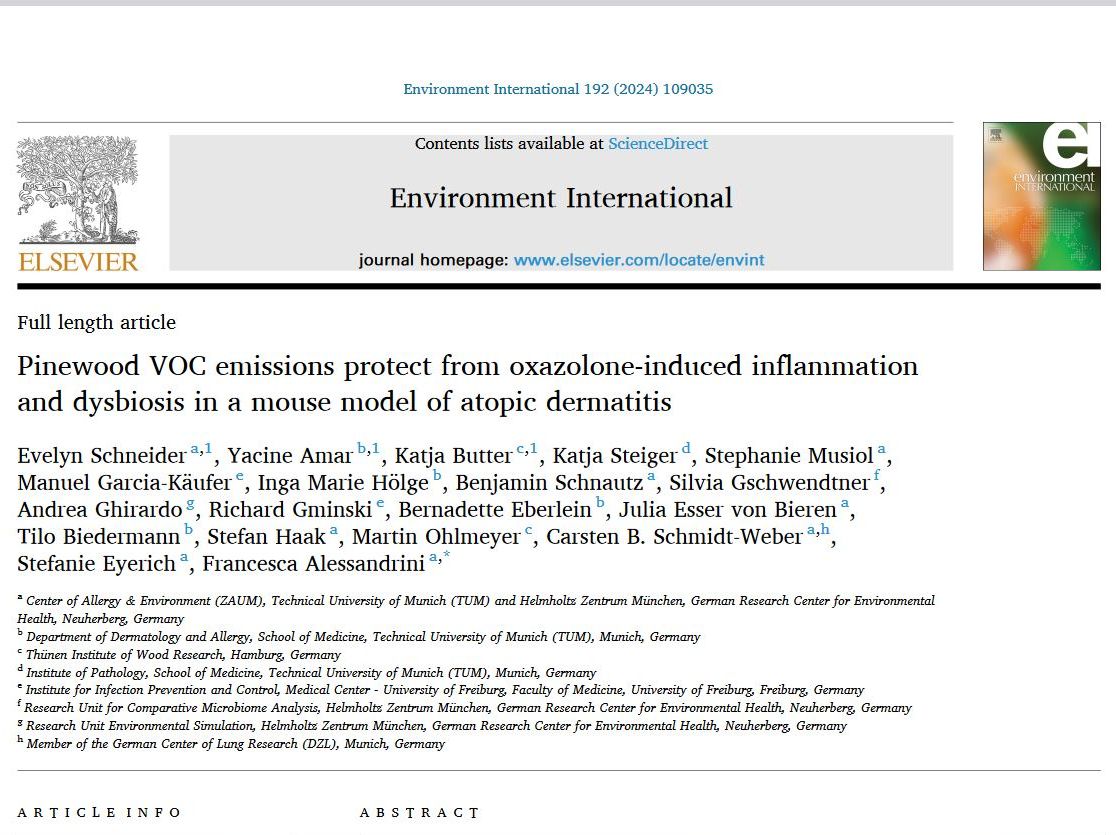The Thuenen Institute of Wood Research was involved in a study led by Prof. Dr. Francesca Alessandrini from the Center for Allergy and Environment (ZAUM) at the Technical University and Helmholtz Zentrum München.
The aim of the study was to investigate the effects of volatile organic compounds (VOCs) from pine wood on atopic dermatitis (AD). The development of an AD-like inflammatory phenotype and the associated changes in the microbiome, both hallmarks of AD, were investigated: a mouse model in which AD was induced using oxazolone was directly exposed to three different VOC concentrations emitted by pine wood throughout the experiment. Disease progression and associated immunological and microbiological changes were evaluated. Pine wood emitted mainly terpenes, which at a total concentration of 5 mg/m³ significantly improved the AD key parameters induced by oxazolone. In particular, exposure to VOCs from pine wood restored the loss of microbial richness and inhibited the proliferation of staphylococci characteristic of the oxazolone-induced murine AD model.
Most of the positive effects of pine emissions were dose-dependent. At lower (< 3 mg/m³) or higher (> 10 mg/m³) VOC concentrations in pine, only limited benefits remained, such as preservation of microbiome richness and inhibition of staphylococcal expansion, respectively. In the human in vitro model (3D skin model in which inflammation similar to AD was simulated), exposure to a pine VOC mixture reduced the release of inflammatory markers.
In conclusion, the results suggest that pine wood emissions have beneficial effects on an AD-like phenotype and associated dysbiosis.
The study was part of the project “Health assessment of emissions from wood and wood products in indoor spaces using experimental toxicological tests”. The joint project was funded by the Federal Ministry of Food and Agriculture (BMEL) via the Agency for Renewable Resources (FNR) as the BMEL's project management agency for the Renewable Resources funding program on the basis of a decision by the German Bundestag.
Contact:
Katja Butter
More informations:
For the specialist article on: sciencedirect.com









